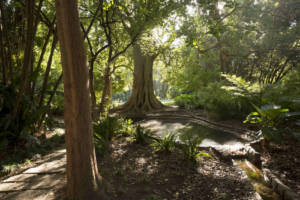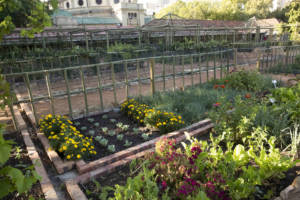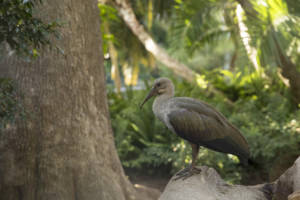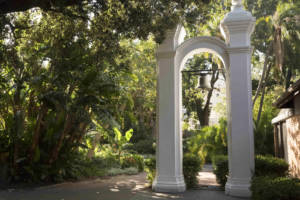
A History of Discovery at The Company’s Garden
At the very heart of historic Cape Town’s city center, bounded by a mix of historic landmarks and small businesses, lies eight hectares of green that have been known for the last 364 years as The Company’s Garden. As the oldest public garden in South Africa, the Company’s Garden traces its origins back to the “Voyages of Discovery”– a period when, towards the end of the 15th Century, European explorers roamed the coasts of Africa attempting to find a sea passage from Europe to Asia, in order to further facilitate the booming spice trade.
The garden’s slightly surreal name comes from the Dutch East India Trading Company, the renowned (and infamous) tea importer who began the garden in 1652. A ship– the Haarlem— had crashed in the Western Cape a few years prior, and once rescued, the survivors of the wreck relayed the easy bounty of land to relatives back home, having planted vegetable seeds to keep themselves alive. The area was already known colloquially as “The Tavern of the Seas“– an unofficial rest stop where fresh water from Table Mountain and fruits and vegetables (which could protect against scurvy) could be collected ahead of long journeys around the Cape.
The enterprising Dutch decided to create a permanent station from what would become the Company’s Garden, as they feared that the British were poised to annex the Cape. On April 29th, 1652, the first ground was broken in The Company’s Garden. The site soon became home to many fruits and vegetables, with herbs and medicinal plots added with time.
After several years, the Dutch decided that food was not the only form of sustenance necessary to survival– beauty was an equally essential consideration. Much like the medieval monks before them, the Dutch began to plant for pleasure as well, importing roses and oak trees towards the end of the 1650’s, and beginning the garden’s shift towards a less utilitarian purpose.
In 1795, the British occupied the Cape. The orderly paths and neat beds the Dutch had planted were adjusted to accommodate the untamed garden style of the British, leading to what is today considered the garden’s signature “Dutch Baroque” meets “Victorian Romantic” aesthetic. With the influence of the British in tow, The Company’s Garden increasingly began to morph from its original function into a botanical garden, and by the middle of the 18th century, it had become internationally renowned– known not only for its impressive splendor, but for the sale of exotic African plants as well.
Today, the garden (now a provincial heritage site) is home to some 8,000 species, a mix of indigenous and foreign plants. The Company’s Garden is open and free to the public (in the course of history only one governor has tried to make the space his own private sanctuary), and today visitors can enjoy the rose garden, fish pond, aviary, tea garden, and Victorian restrooms (don’t worry, they have the modern equivalent, as well).
While much of the original garden space has been lost to development, a recreation vegetable garden was completed in 2014, and was carried out in accordance with the original Dutch designs. Fully functional, the beds grow several historic varieties of herbs, as well as more standard fruit and vegetable fare. Though its origins are many hundreds of years old, the Company’s Garden restoration project highlights contemporary urban challenges, like the general lack of food gardens despite the availability of unused space. The Company’s Garden also plays host to a variety of educational programming, which in turn encourages more productive urban gardening.
From its style to its purpose to its location, The Company’s Garden is a charmingly eccentric mix of eras. The fusion is indicative of its greatest strength: the garden has evolved with the years, growing and changing to meet the needs of those around it. Of course, in some ways, those needs haven’t changed much at all– it seems we are still in search of good food and a place to enjoy nature. But in either circumstance, The Company’s Garden is happy to oblige.
For more information on The Company’s Garden or to find out how to visit, check out the garden’s website.





































